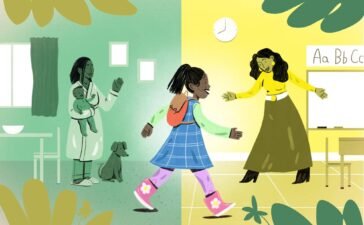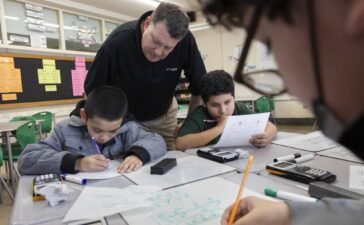Step 2: After reflecting on the task at hand in your own voice, imagine yourself on the other side of the moment, paying close attention to what you feel. I ask myself, how might I feel once I complete this task? What is the goal? How will I know I’ve done it? To return to my previous example about incorporating more opportunities for multimodality into my classroom, I extended my previous journal post to include language such as this:
This feels very good. I always wanted my classroom to be a space where students could exist in multiple ways. And now it is. What a year we’ve had. I started simple with making sure that each assessment had multimodal options, and the students really responded well. I got to learn so much more about them and myself. We all grew in our creativity, criticality, and innovation. And I even had a few students share that this was an important year for them because they felt seen and got to get better at video editing, which was important for them.
At the time I wrote this text, it was aspirational — I hadn’t yet begun to incorporate multimodality. I was using the reflection to cast a vision, dream a dream. It allowed me to identify a goal and articulate what I was working toward, therefore directing my attention away from all the fear I had about starting the process. This also connects to the work of Jamila Lyiscott, who encourages us to move forward with vision by focusing on what we are fighting for, not only what we are fighting against. So, this second step is an invitation for you to cast your vision and become clear about what kind of life and approach to teaching you are working toward. Based on your articulation of the task in step one, what do you want to see? Imagine yourself seeing and experiencing it. Dream.
Step 3: Take the vision articulated in step two and separate it into smaller, bite-sized pieces. I use a calendar or something similar to set goals and expectations for each smaller task. This step has always felt the most familiar to me as an educator: I have grown accustomed to working backward when designing lesson plans, unit plans, activities and other classroom resources. Shout-out to Understanding by Design for the process. Using the Understanding by Design framework, I begin by identifying the desired results or end product for students and work backward.
For example, my goal for incorporating multimodalities into my classroom was making sure to invite and encourage students to share their ideas and understandings in a variety of ways outside of traditional print. With my goal identified, I then ask myself what that end “thing” looks like. For example, what was my vision for a more multimodal classroom? Many folks in the field might refer to this as evidence of learning or the thing that students produce to demonstrate their learning with regard to the goals and objectives.
Once I have a vision for what I expect students to be able to produce, I then ask myself, what are all the things students need to know and be able to do to successfully produce the final product? What are the things we should explore? For example, we might need to explore various examples of knowledge sharing so that students would be aware of all the options they had for sharing what they knew. In addition, it might be a good idea to have time to explore and define the concept of knowledge for ourselves. Then I place these examples and all the other items needed for the final product in a sequence. That is, I could dedicate classes one and two to engaging with multimodal examples and unpacking knowledge. The following classes would be more explicitly devoted to content aligned with our content objectives.
Once I am clear about what my vision and end goals are, I can work backward. If I wanted to bring to life the multimodal classroom I envisioned during step two, what were the day-to-day things I needed to do to reach that goal? And for executing my goal, I rely on expectations and dates. I know deadlines and due dates produce anxiety for some folks. So, again, please do what makes sense for you. However, I encourage you to have some way to hold your-
self accountable for your growth toward bringing to fruition your vision from step two.
Step 4: Finally, breathe. Someone very special in my life constantly says to me that it is not usually a great idea to show up to the work we want to do tired. This reminds me to rest and take care of myself so that when I show up to this important work, I have something to give and pour into it. So, breathe. And when you are ready, start.






